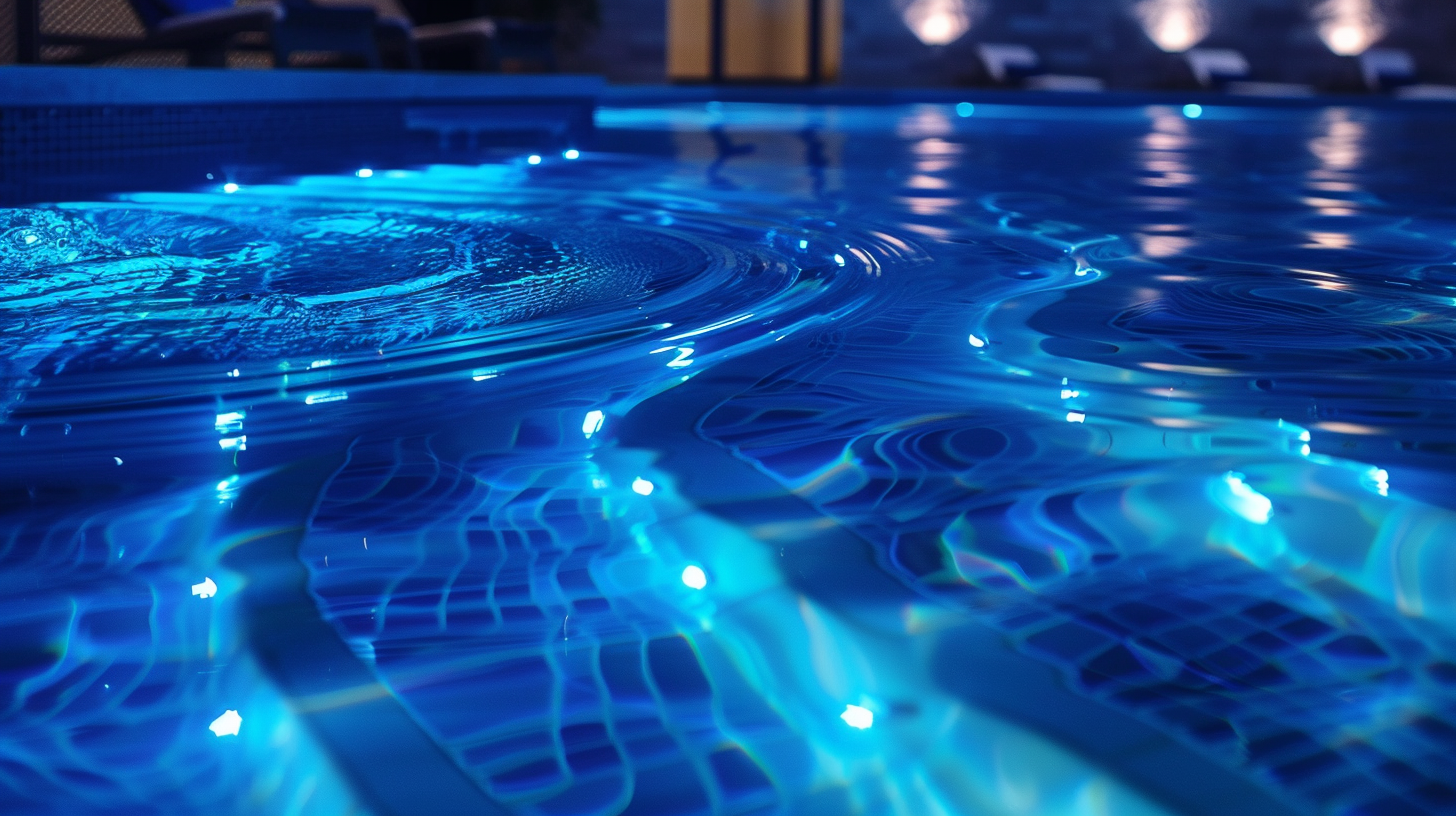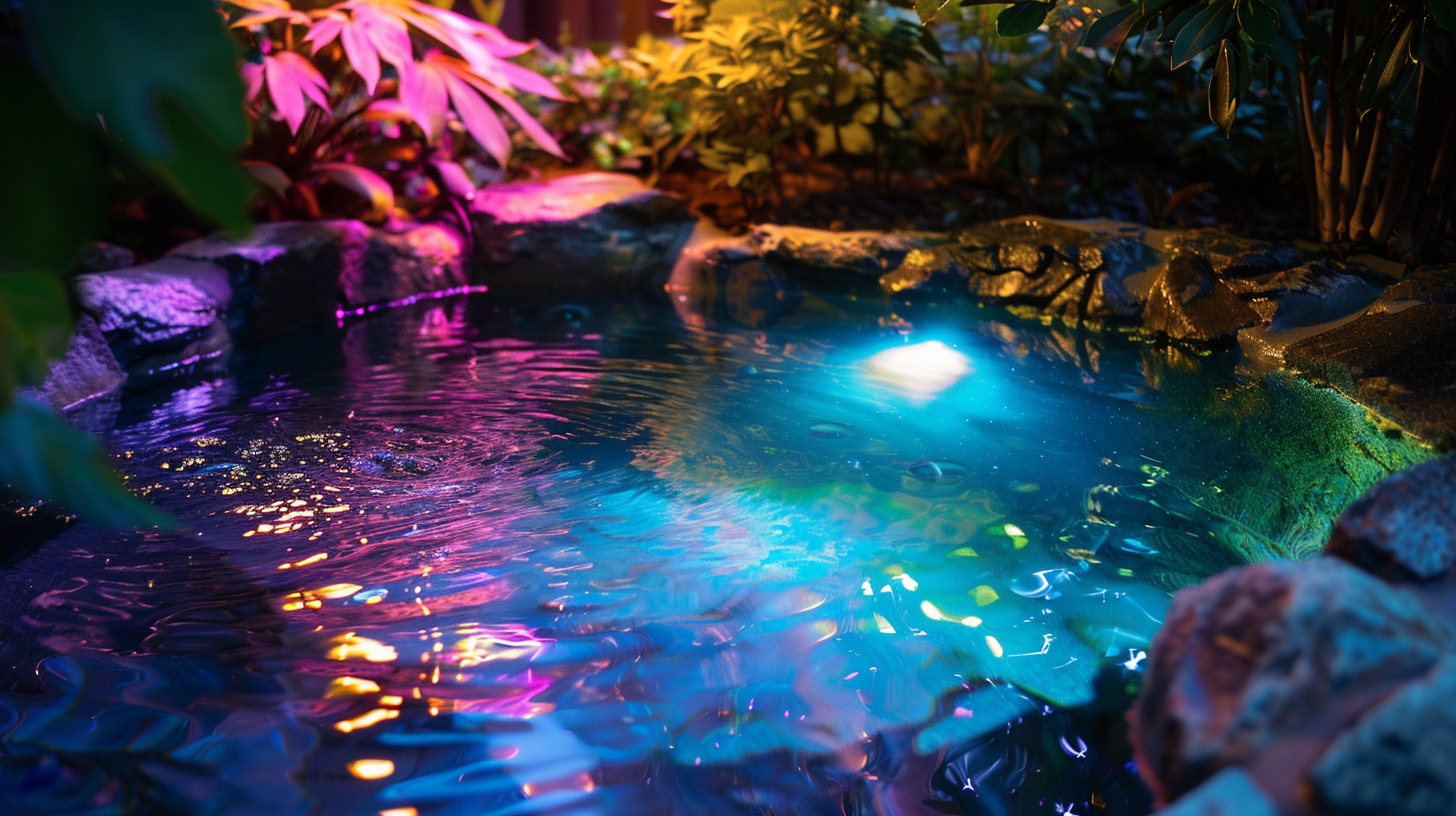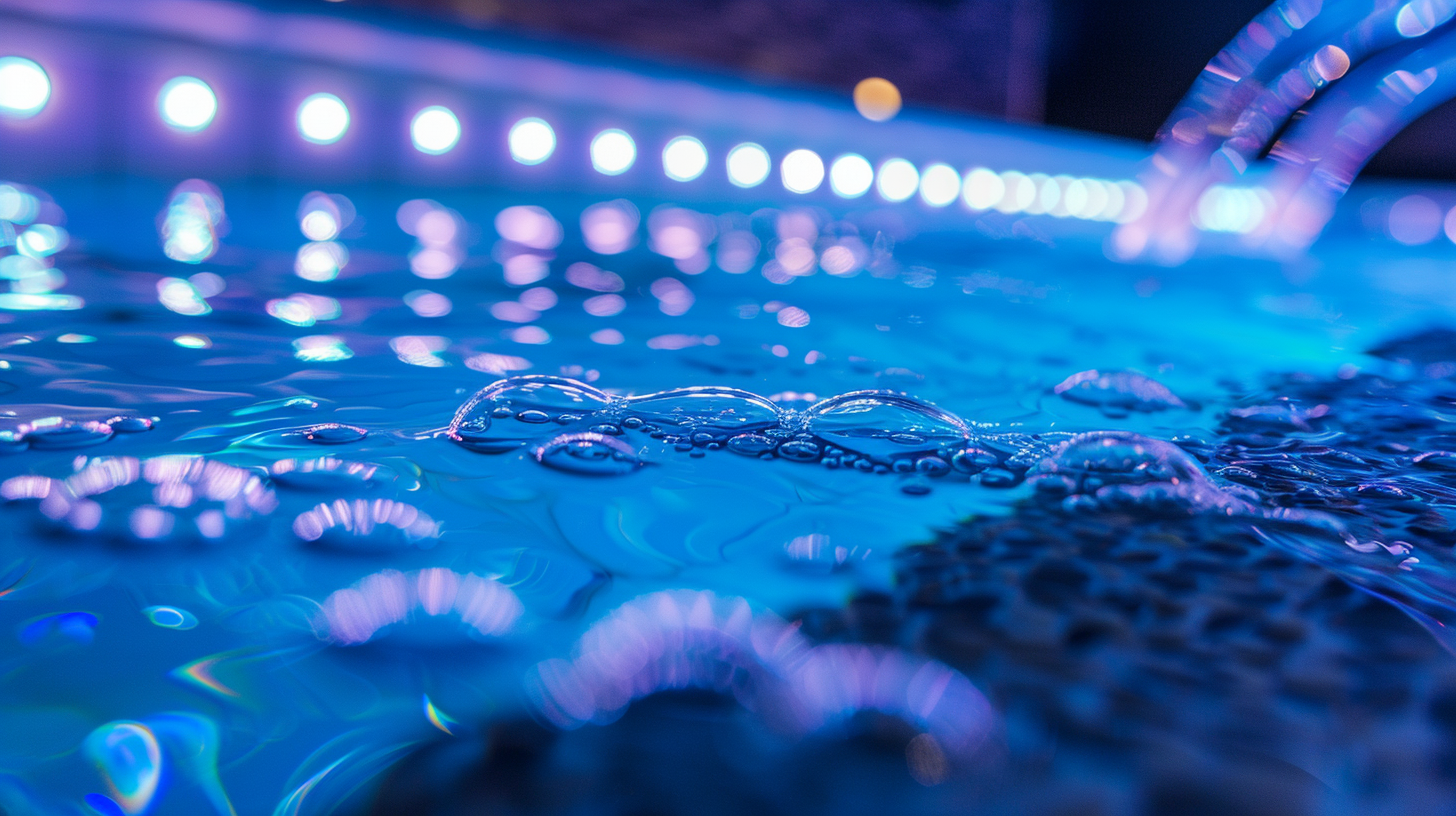The environmental impact of underwater pool lights
Underwater pool lights have long been a fascinating fixture in the world of aquatic environments. These lights are not just about the dazzling visual appeal they add to swimming pools but also play a crucial role in enhancing safety during nighttime swims. Essentially, they come in various forms, including halogen, incandescent, and the increasingly popular LED lights.
LED lights are making waves in this segment largely due to their energy efficiency and longevity. A typical LED light consumes significantly less power than its halogen or incandescent counterparts, which means less strain on energy resources and reduced electricity bills for pool owners. However, the environmental impact of underwater pool lights extends beyond mere energy consumption.
When considering installing underwater pool lights, it’s imperative to understand that their installation and usage involve complex electrical systems that need to be water-sealed and corrosion-resistant. This means that the materials used in constructing these fixtures need to be durable and non-toxic to prevent any harm to both humans and marine life.
Furthermore, the type of light emitted also matters. While some prefer the warm, nostalgic glow of incandescent lights, more environmentally conscious consumers are leaning towards LEDs not just for their efficiency but also for their reduced heat output. This translates to fewer opportunities for chemical reactions that could adversely affect the water quality in the pool and surrounding natural water bodies.
In essence, understanding underwater pool lights goes beyond their aesthetic value. It requires a comprehensive look at their functionality, energy efficiency, and the broader environmental impact they generate. Proper installation and the choice of eco-friendly options can make a remarkable difference in how these lights affect our world.
Energy consumption and efficiency
When it comes to energy consumption, underwater pool lights can be a significant factor in a pool’s overall energy footprint. Traditional incandescent and halogen lights are known for their high energy usage, which can quickly add up in terms of electricity consumption. For instance, a standard incandescent underwater light can consume up to 300-500 watts, whereas halogen lights generally use about 75-100 watts. While these lights are often praised for their strong illumination and warmth, their inefficiency becomes a notable issue, particularly for environmentally conscious pool owners.
In stark contrast, LED lights have emerged as the champions of energy efficiency in the realm of underwater pool lights. LED (Light Emitting Diode) technology consumes a fraction of the energy used by traditional lighting methods – typically around 30-50 watts for similar levels of brightness found in incandescent options. This dramatic reduction in energy usage not only alleviates the environmental impact but also translates into substantial cost savings for pool owners over time. Given their long lifespan, often exceeding 25,000 hours of usage, LEDs offer an additional layer of efficiency by reducing the frequency of replacements and maintenance.
Efficiency in underwater pool lighting is not merely about the wattage. Advanced LED systems often come with programmable features and smart technology that further enhance their efficiency. Pool owners can take advantage of timers, dimmers, and motion sensors to optimize light usage, ensuring lights are only on when needed. This not only conserves energy but also reduces light pollution, which can play a crucial role in preserving local ecosystems.
Despite these advancements, it’s essential for consumers to consider the total lifecycle energy consumption of their underwater pool lights. Manufacturing, shipping, and disposal all contribute to the overall environmental impact. LEDs generally have a smaller carbon footprint throughout their lifecycle compared to traditional lights, mainly due to lesser energy consumption and longer durability. However, sustainable practices such as proper disposal and recycling of old lights are vital to minimize environmental harm.
By opting for LED underwater pool lights, pool owners can significantly reduce their energy consumption while still enjoying well-lit, aesthetically pleasing pools. Understanding the energy dynamics of pool lighting can help in making informed decisions that benefit both their wallet and the environment. With energy efficiency taking the center stage, LEDs have proven to be an excellent choice for those looking to reduce their environmental impact while enhancing their swimming experience.
Effects on aquatic life
Underwater pool lights, while visually captivating, have significant repercussions on aquatic ecosystems. The intense illumination and heat generated by these lights can disrupt the behavior and habitat of many marine creatures. Fish and other aquatic organisms rely heavily on natural light cycles for their daily and seasonal rhythms. Artificial lighting, especially when it penetrates deeply into water, can extend daylight hours beyond natural levels, causing confusion and stress among aquatic life.
One of the most impacted behavioral changes is in the feeding habits of fish. Many species rely on darkness to hunt or avoid predators, and constant or excessive exposure to light can alter their natural feeding patterns. This disruption not only affects the fish but can cascade through the food web, impacting other creatures that depend on them for sustenance. Light pollution can also interfere with the mating rituals of certain species, leading to reduced reproduction rates and affecting the overall population dynamics.
The heat emitted by traditional incandescent and halogen underwater pool lights also poses a threat to aquatic life. Warmer water temperatures can reduce oxygen levels, making it hard for fish and other creatures to breathe. In more severe cases, prolonged exposure to elevated temperatures can result in thermal stress or even death for some aquatic species. The shift in temperature can also contribute to the growth of harmful algae blooms, further depleting the oxygen content and releasing toxins that harm both marine life and humans.
Moreover, the glare from underwater pool lights can interfere with the navigation and migratory patterns of aquatic animals, including turtles and fish. Many species use natural light patterns from the moon and stars for orientation and migration. Over-illumination can disorient these creatures, causing them to veer off course, which can be particularly detrimental during crucial life stages like mating or nesting.
Another often-overlooked impact is the influence of artificial light on the reproductive cycles of marine plants. Many aquatic plants rely on specific light wavelengths and periods for photosynthesis and growth. Disruption of these light cycles by artificial lighting can inhibit plant growth, affecting the entire aquatic ecosystem, as plants are the primary producers and form the basis of the food chain.
Understanding these environmental impacts compels us to rethink our choices in underwater pool lighting. Switching to LED lights can mitigate some negative consequences, as they emit less heat and can be adjusted to lower brightness levels, reducing the disruption to aquatic environments. It’s also possible to employ light shields and filters that direct light downward, minimizing the spread and impact of artificial lighting on the surrounding ecosystem.
By considering the broader environmental implications of underwater pool lights, pool owners can make more informed decisions that not only beautify their spaces but also protect the delicate balance of our aquatic ecosystems. Balancing aesthetic desires with responsible environmental stewardship is key to ensuring that our enjoyment of swimming pools does not come at the expense of the thriving underwater world.
Chemical impacts from light materials
The materials used in the construction of underwater pool lights can have significant environmental repercussions. Traditional underwater lighting often involves the use of metals, plastics, and various chemical compounds that, if not properly managed, can leach into the surrounding water and soil. This leaching process poses a threat to both aquatic life and human health.
One of the primary concerns is the use of metals such as copper, lead, and zinc in the light fixtures and wiring. When these metals corrode, they release toxic substances into the water, which can be detrimental to aquatic organisms. For example, copper is known to disrupt the olfactory systems of fish, which impairs their ability to find food and navigate their environment. Lead, even in small quantities, is poisonous to both aquatic life and humans. Its accumulation can lead to severe health issues, including neurological damage.
Plastics are another significant environmental concern. Many underwater pool lights are encased in plastic housings, which, over time, can degrade and release microplastics into the water. These microplastics are ingested by aquatic organisms, entering the food chain and potentially reaching humans. The long-term effects of microplastic ingestion are still being studied, but they are believed to include a range of toxicological impacts.
Moreover, the production of these plastic housings involves the use of phthalates and other plasticizers that can also leach into the water. Phthalates are known endocrine disruptors, affecting the hormonal systems of both aquatic organisms and humans. This disruption can lead to reproductive and developmental problems, further endangering species.
Another crucial aspect is the chemical coatings used on the lights to prevent corrosion and ensure longevity. Many of these coatings contain volatile organic compounds (VOCs), which can evaporate and contribute to air pollution. When these VOCs eventually settle into the water, they can cause additional chemical reactions that harm water quality and aquatic life. These compounds also contribute to the formation of ground-level ozone, which is harmful to human health and ecosystems.
Table showing common materials and their environmental impact:
| Material | Environmental Impact |
|---|---|
| Copper | Olfactory system disruption in fish; toxic accumulation in water |
| Lead | Neurological damage to aquatic life and humans; highly toxic |
| Plastic | Microplastics pollution; ingestion by aquatic life; hormonal disruption |
| Phthalates | Endocrine disruptors leading to reproductive and developmental issues |
| VOCs | Air and water pollution; contributes to ground-level ozone formation |
Additionally, the disposal of underwater pool lights poses another set of environmental challenges. Traditional lighting units often contain materials that are difficult to recycle and may require special handling to avoid contamination. The improper disposal of these lights can result in hazardous substances entering landfills, where they can leach into the soil and groundwater, further propagating their toxic effects.
Therefore, considering the broader environmental impact of the materials used in underwater pool lights is crucial. Pool owners and manufacturers alike must prioritize the use of eco-friendly materials and proper disposal methods to mitigate these harmful effects. Sustainable choices, such as lights made from recyclable materials and utilizing safer chemical alternatives, can significantly reduce the environmental footprint associated with underwater pool lighting. By taking these steps, we can ensure that our enjoyment of well-lit swimming pools does not come at the expense of environmental and public health.
Sustainable alternatives and solutions
As the environmental impact of traditional underwater pool lights becomes increasingly evident, sustainable alternatives and solutions have emerged as viable options to mitigate their negative consequences. One of the most promising alternatives is the adoption of solar-powered underwater pool lights. These lights harness energy from the sun, effectively eliminating the need for electricity and reducing overall energy consumption. By integrating solar panels with rechargeable batteries, these lights store solar energy during the day to illuminate the pool at night. This not only cuts down on electricity bills but also significantly reduces the carbon footprint associated with operating pool lights.
Another sustainable option is the use of low-voltage LED lighting systems. These systems are designed to operate on much lower electrical inputs compared to traditional incandescent or halogen lights. LEDs, known for their energy efficiency, have an extended lifespan, which decreases the frequency of replacements and maintenance. Additionally, many low-voltage LED systems come with features such as adjustable brightness settings and programmable timers, allowing pool owners to control and optimize light usage, further conserving energy and reducing light pollution.
The material composition of underwater pool lights also plays a critical role in their environmental impact. Opting for lights made from eco-friendly materials, such as recyclable aluminum or stainless steel, can greatly reduce environmental harm. These materials are less prone to corrosion and degradation, preventing the leaching of harmful substances into the water. Manufacturers are also exploring the use of biodegradable plastics, which break down more readily in the environment, minimizing the long-term accumulation of microplastics in aquatic ecosystems.
Innovative technological advancements have led to the development of smart lighting systems that include motion sensors and remote controls. Motion sensors ensure that the lights are only active when the pool area is in use, thereby conserving energy. Remote controls enable pool owners to easily switch off lights when they are not needed, promoting thoughtful energy management. Furthermore, advanced filtration systems integrated with these smart lights can actively monitor and maintain optimal water quality, reducing the need for chemical treatments that often accompany underwater lighting systems.
An increasingly popular sustainable practice involves the use of reflective pool coatings and covers. Reflective coatings amplify the existing light within the pool, allowing for lower wattage bulbs without compromising on illumination quality. This reduction in power requirements lowers energy consumption and decreases heat emission, which is beneficial for aquatic life. Pool covers, on the other hand, help retain light and heat within the pool, enhancing the overall efficiency of the lighting system.
Switching to eco-friendly lighting solutions represents not just a commitment to reducing one’s environmental footprint but also offers substantial economic benefits. Government incentives and rebates are often available for homeowners who invest in energy-saving technologies, including solar-powered and LED lighting systems. In addition, as the market for sustainable products grows, the initial costs of these eco-friendly options are becoming more affordable for the average consumer.
Consumer awareness and responsibility are crucial in driving the adoption of sustainable underwater pool lights. By staying informed about the environmental impact of their lighting choices and exploring available eco-friendly alternatives, pool owners can make decisions that favor both their personal enjoyment and the well-being of the environment. The beauty of a well-lit pool need not come at the cost of harming aquatic ecosystems or contributing to energy waste. Through thoughtful consideration and the adoption of innovative, sustainable solutions, the future of underwater pool lighting can be both environmentally friendly and delightfully illuminating.


